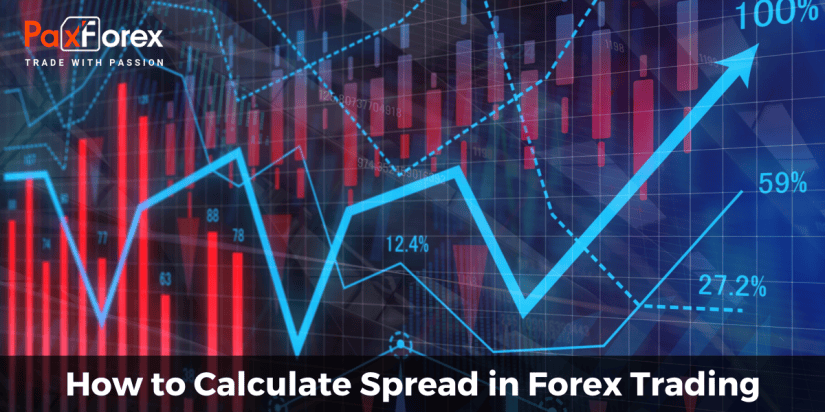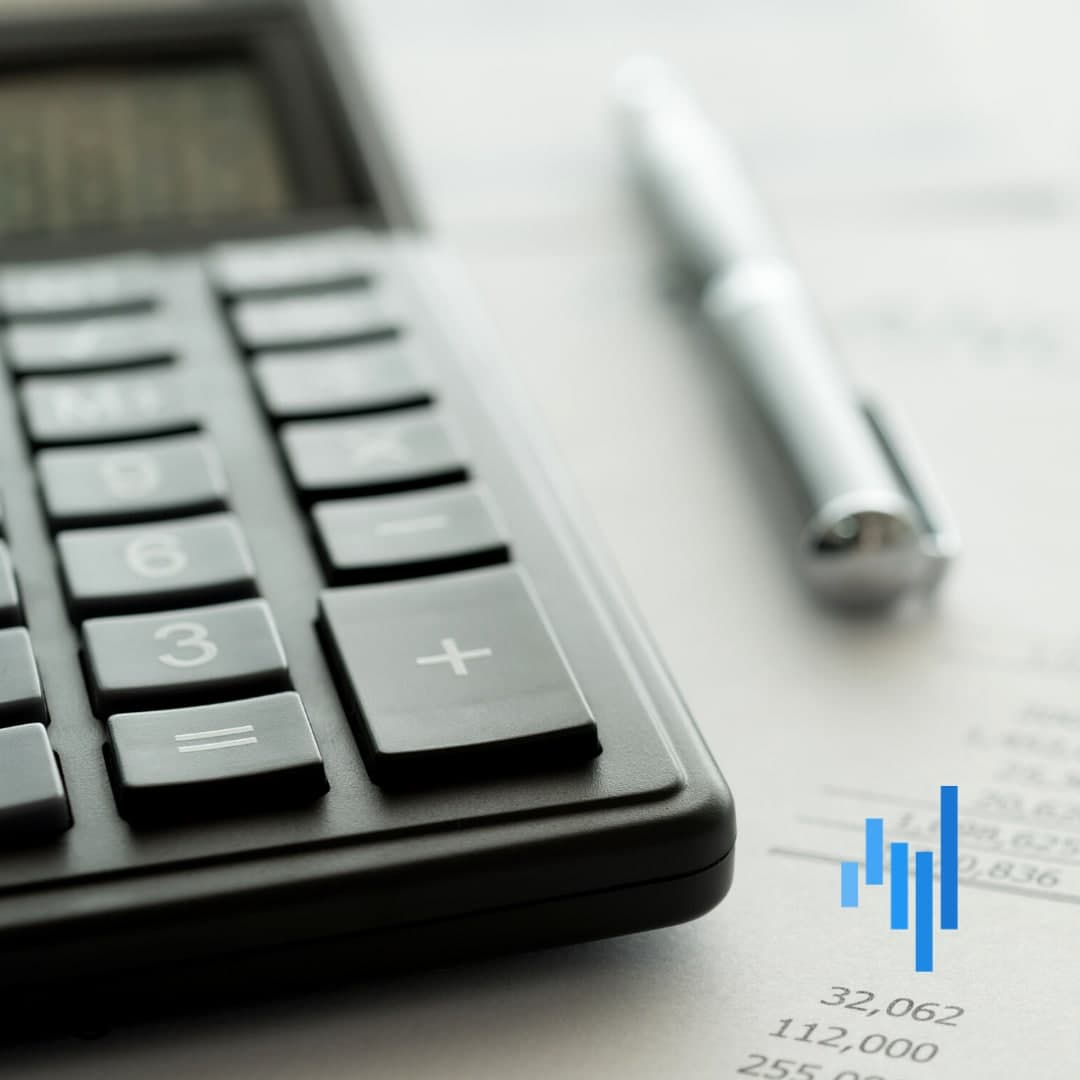Understanding the Forex Spread

Any forex trader must understand the nuances of spread calculation. The gain of trade largely depends on the spread. It also affects the level of drawdown of open trades, which can lead to the closure of the order on Stop Out if the risks are calculated incorrectly.
Diving deeper into what is the spread in forex, you can get the answer to a number of questions that will help to lead effective trading.
What is the Forex Spread?
Spread on the forex market is the difference between the best buy and sell price of a financial asset. A special spreadsheet is used to display the value of investment instruments. It displays the buy and sell prices of currency pairs. In addition, the table shows the volume of the asset which the seller intends to sell.
Bids of investors, who are ready to buy or sell the currency at a certain price, are called limit orders. If the trader wants to buy an asset at its current value, he places a market order. This type of order is not displayed in the trading table.
A buy/sell transaction is made when limit and market orders coincide. If traders could place only one type of exchange order, counterparties would have to wait for the coincidence of counter prices for a particular asset. This approach slows down stock trading.
How is the Spread Formed?
The forex spread is directly related to liquidity. The lower the price difference, the easier it is to sell or buy one or another currency. To increase the speed of transactions the exchange market attracts the professional participants of the currency market (market makers). These companies agree with an exchange trading floor and are obliged to maintain a certain size of the spread.
In return, market makers receive remuneration and certain bonuses. If professional participants do not take part in exchange trading, the value of the spread is determined by the actions of investors.
Bids of professional market makers are executed first. In addition, the exchange charges market makers a minimum commission. Professional financial market players can benefit from placing limit orders to buy or sell currencies.
What Spread Affects
Spread size to a large extent determines the earnings potential of forex transactions, especially when using short-term strategies (pipsing, scalping). When opening a position a trader immediately receives a "minus" on the spread in pips. If a trade is meant for a very short time interval, it is difficult to win back the spread and gain on a wide spread.
This is the reason why scalpers:
- Choose highly liquid assets (for example, major currency pairs), on which brokers set minimum spreads (as a rule, up to 3 pips);
- Do not break the sleep mode (night-time spreads tend to increase significantly, because the activity of volatile trading instruments goes down, and the rest from the daytime stress is necessary).
How to Check the Broker's Spread
To protect yourself from non-trading losses in forex, we advise you to read in detail the terms of cooperation on the agreement "client-broker", where the spread rates should be spelled out (or there should be a link to a certain broker's resource).
Like insurance, you can use the spread indicator that is installed in the MetaTrader trading terminals and allows you to see the actual spread (visualization on every tick). This tool is suitable for working with brokers that offer floating and widening spreads.
Types of Spread in Forex Trading
In the course of trading, there may be fixed and floating spreads. The price difference of the first type has a clearly defined size, which does not depend on exchange rates. A fixed spread is not influenced by the balance of supply and demand, which occurs during operations with different currency pairs. The value of the set price difference is written in the contract between the brokerage company and the trader.
A fixed spread allows forecasting the dynamics of quotes and calculating an approximate amount of gains from a trade. In some cases, the price difference can be changed manually by the broker. The fixed spread is best suited for automated trading. The investor can adjust the program robots taking into account the set price difference.
The floating spread is the most widely practiced in trading. The lower border of the price difference is set by the broker. The specified value may change upward under the influence of various market factors. During the crisis, a floating spread equals several dozens of pips. In stable times the value of the price difference is a few units.
In addition to the intra-market spread, there is the inter-market spread. It shows the price difference between the price of the asset at various exchange floors. If an investor is going to capitalize on arbitrage operations, he should take into consideration the exchange rate differences and the amount of commission, charged by a broker and an exchange.
What Factors Affect the Spread?
The value of the spread is set under the influence of several interrelated factors. First of all, the value of the price difference is determined by the liquidity of the financial instrument. The minimum value of the spread is set for highly liquid assets and the maximum - for low-liquid instruments. In addition, the value of the price difference may decrease during illiquid periods (weekends, holidays, and nighttime).
The value of the spread also depends on the volume of the trade. The difference between buy and sell prices increases when trades are executed with small or too large volumes of assets. In this case spread increase is connected with additional financial expenses, incurred by a brokerage company. Depending on the trade turnover and liquidity level, the following currency pairs are distinguished:
Base. Spread is from 0 to 5 pips. An example of such an asset could be a Euro/Dollar pair.
Secondary. The price difference is 6-10 points. An example of such a currency pair is the Pound Sterling/New Zealand Dollar.
Exotic. The spread exceeds 10 units. An example is the U.S. Dollar/Zloty.
The buy and sell prices of currencies can change significantly during economic crises and global political instability. While waiting for the relevant news, the spread can increase several times. Some brokers develop special partner systems for traders. For participants of such programs, the spread can be set at a discounted rate.
The price difference should be considered when placing pending orders (Take Profit and Stop Loss). To reduce costs, limit orders that are executed at a fixed or higher price should be placed. When placing such market orders, one should understand that they may fail to operate during periods of high market volatility.
How to Take Spreads into Consideration When Trading
Spread in the forex market plays one of the defining roles for short-term (intraday) strategies, where the return is estimated at 10-20 points. Traders who use high time frames (from H4 and higher) do not care about losses on spreads, because their gain goals are calculated in hundreds of points, and risky assets are rarely used as instruments.
Short-term tactics opening long positions relies on the exact level of Take Profit, which takes into account the size of the spread (added to the main trading signal). Stop Loss is set as standard, from the moment of receiving the signal. For short positions, Stop Loss is set higher, as in this case the spread plays in the opposite direction and can activate the Stop order prematurely.
How to Get Part Of The Spread Paid Back
Many forex brokers provide traders with rebate services, which allow them to refund part of the spread paid earlier. The rebate can be fixed or floating. In the latter case, the rebate is calculated as a percentage of intraday or monthly trading turnover.
Spread is paid back by a brokerage company or a specialized service. Rebate is paid both on winning and losing trades. Compensation can be accrued both on one and several brokerage accounts.
Beginner traders often wonder why a broker gives back a part of the spread. Rebate is an effective marketing tool that allows to attract new clients and strengthen partnership relations with existing contractors. Statistics collected by brokerage companies show that a partial rebate of spread stimulates an increase in trading turnover.
Most of the received spread is reinvested into currency assets. Traders who take advantage of the discount tend to use leverage and open professional ECN accounts with more favorable rebate conditions.
The amount of rebate for each currency pair is set individually. The largest rebates are offered for exotic instruments with higher volatility.
A spread rebate system is very important for clients' loyalty preservation. Rebate is a kind of "consolation prize", which allows you to cut losses on losing trades. Collaboration with specialized services of spread rebate allows attracting clients from all over the world without having to open representative offices of a brokerage company.
The Largest Market Makers Managing Liquidity and Setting Spreads in Forex Market
The leading professional players in the global financial market are major financial groups based in Europe and America. According to Reuters, the following financial institutions are the largest market makers:
Deutsche Bank. Germany's largest financial conglomerate. The bank is headquartered in Frankfurt am Main. The commercial organization includes about 30 multinational credit structures. Deutsche Bank serves more than 30 million customers in 59 countries around the world. The bank's assets in Q1 2022 were about 1.343 trillion euros. The net return of the financial organization in 2021 amounted to 1.94 billion euros. Deutsche Bank employs more than 80 thousand people in its banking units.
UBS. The largest Swiss financial group is headquartered in Zurich. It provides wealthy clients with capital management services. The bank serves about half of all dollar billionaires in the world. The financial institution had assets of $1.12 trillion in 2021 and a net income of $7.46 billion. UBS is on the list of 29 systemically important global banks. The group employs more than 71,000 people.
Citigroup. One of the largest international financial conglomerates, headquartered in the United States. The group's assets are more than $ 1.67 trillion. Citigroup's net income in 2021 was $22 billion. The bank is a primary dealer of securities issued by the U.S. Treasury. The financial group serves institutional investors, government agencies, and individuals. The number of employees of the banking conglomerate exceeds 210,000.
Royal Bank of Scotland. One of the largest commercial banks in Scotland has the right to issue banknotes. This commercial organization provides a full range of services related to insurance, lending, and banking to individuals and legal entities. The assets of the organization are about 1 trillion pounds. The financial organization employs more than 82 thousand people. The controlling stake in the bank is owned by the British government.
Barclays. It is the second-largest bank in Great Britain in terms of assets. The financial group is engaged in credit cards, wealth management, and retail banking. As of May 31, 2022 bank has $36.37 billion in assets and $7.714 billion in earnings in 2021. The number of employees working for the financial group is 83,000.
Bank of America. The financial institution is one of the four largest U.S. banks. The assets of the holding company are 2.52 trillion dollars. Net income for 2021 was $30.557 billion. The bank employs more than 213,000 people. The main areas of financial business are consumer lending, stockbroking, and global asset management.
HSBC. It is the largest financial holding company in Great Britain. The banking group serves more than 40 million clients in 67 countries. The holding company has almost $3 trillion in assets and $12.607 billion in net income (2021 data). The group serves institutional investors, government organizations, and individuals. The bank is authorized to issue banknotes. The holding company has more than 226,000 employees.
Goldman Sachs. One of the largest financial conglomerates in the world that provides banking and investment management services. The central office of the credit organization is located in New York. As of March 2022, the assets of the bank amounted to $ 1.58 trillion. Net income for 2021 was $21.6 billion.
JP Morgan. An international financial holding company serving millions of individuals and businesses. Clients are offered a wide range of services in asset management, as well as corporate, commercial, and consumer banking. JP Morgan is one of the largest depository banks, with $3.95 trillion in assets. The holding company posted a record $48.3 billion gains in 2021.
Morgan Stanley. U.S. banking group that owns the largest brokerage firm in the world. The bank's experts provide advice on mergers and acquisitions. Morgan Stanley Holding is engaged in underwriting and provides asset management services. The bank has $1.11 trillion in assets. Net income in 2021 was more than $25 billion. The bank has about 70,000 employees.
Almost all of these organizations, providing market liquidity and regulating the size of the spread, belong to the so-called systemically important financial institutions. The bankruptcy of these credit institutions would have grave consequences for the world economy.
If a financial crisis arises, the management of a systemically important bank may turn to the government for help. Major financial holdings conduct their activities in compliance with the requirements worked out by the Basel Committee on Banking Supervision. Financial institutions are obliged to create additional reserves of their own capital.
Conclusion
Spreads are among the basic elements of trading on the forex market. Competent price movement forecasts can be leveled if the size is not taken into account.
Those new to forex trading, whose short-term strategies are always seeking quick results, should choose their broker and financial assets with great care so as not to fall prey to exorbitant spreads.








